powered by
FreeFind
Weston-super-Mare
Piers & Excursion Boats
Each image links to a larger
copy which opens in a new window/tab
Weston Piers
Birnbeck Pier - The Old
Pier
The grade II* listed
Birnbeck Pier at Weston-super-Mare was designed by Eugenius Birch and
opened in 1867. The gothic toll house and pierhead buildings were
designed by local architect Hans Price. The pier is in need of extensive
work and is closed to the public.
Birnbeck Pier is the only pier
in the country which links the mainland to an island just off shore. A
proposal in 1845 to link Birnbeck Island to the mainland at the western
end of Worlebury Hill saw work start on a suspension bridge two years
later. A strike by stone masons during which a storm damaged the little
that had been built saw an end to that scheme.
A new proposal
came in 1864 to form a company to build a pier across to the island.
This was funded by 2,000 shares which raised �20,000. Cecil Hugh
Smyth-Pigott, the four year old son of the lord of the manor, laid the
foundation stone on 28 October 1864 when a public holiday was declared
in the town and a celebratory dinner was held in the Town Hall.
The main pier is 1150 feet (351m) long and 20 feet (6m) wide. It has
abutments at either end, making its construction more like a bridge than
other pleasure piers. Fifteen groups of piles support a continuous
lattice girder, each set comprising four piles screwed into the river
bed at an angle with an X-brace between each adjacent pair. There were
problems with oscillations in the structure when bands marched on the
pier, both on the opening day and again in 1886, and so further
horizontal cross braces were added to the piles. A landing jetty
extended on the west side of the island to allow steamers to bring day
trippers to Weston-super-Mare from ports on both the English and Welsh
side of the Bristol Channel.
The pier opened on 6 June 1867. The
toll to walk on the pier was 1d, but this was quickly raised to 2d and
120,000 people paid the toll in the first three months. A new wooden
northern jetty was added in 1872 which allowed the removal of the
original western landing place. Another jetty was added on the south
west corner in 1898 which reached deep water even at low tide, thus
allowing steamers to use the pier at all states of the tide. This was
damaged in a gale in 1903, rebuilt in 1909 but closed in 1916. It was
finally removed in 1923. The northern jetty had also been damaged in the
1903 storm but was replaced by the present steel structure in 1905.
A second pier, the Grand Pier, was opened in the centre of
Weston-super-Mare in 1904. Although it was provided with a steamer
landing it was seldom used due to difficult currents around the
structure. Visitors to the town were able to catch an electric tram from
the pier approach road at Birnbeck.
Many visitors arriving on the
steamers never left the pier, instead they made use of the cafe,
pavilion, amusements and funfair on Birnbeck Island, which is why the
Grand Pier also tried to create a steamer landing stage. These were
destroyed by fire on 26 December 1897 and replaced by the present
buildings, although these have been altered over the years. An extension
on iron supports along the south side of the island was opened in 1909
which allowed a larger area for the amusements. This was not built to
the proper specifications so was demolished in 1912 but a larger
concrete platform was constructed in 1932.
In 1941 the pier was
taken over by the Admiralty as an outpost of the Directorate of
Miscellaneous Weapons Development (DMWD). It was commissioned as HMS
Birnbeck and was used for secret weapons testing including the 'Bouncing
bomb'.
In 1962 the Birnbeck Pier Company sold the pier to P & A
Campbell, the steamer operators. After the withdrawal of their ships it
was sold to John Critchley who redeveloped it as a 'Victorian pleasure
centre' which even had special permission to issue its own currency to
visitors. There have since been several proposals to make the pier a
commercial success again, including converting it into a hotel, casino,
residential use, or the centre of a marina.
The most successful
steamer company serving the Bristol Channel was P & A Campbell's White
Funnel fleet. Their operations were suspended during the Second World
War but afterwards the number of passengers carried decreased with the
availability of cheap foreign holidays and the opening on the Severn
Bridge in the 1960s. Regular ferries ceased serving Birnbeck in 1971 and
the final excursion called on 19 October 1979. The excursion vessels
PS Waverley and MV Balmoral still operate in the Bristol
Channel, but any calls at Weston are made by a connecting tender from
Knightstone Harbour.
Weston-super-Mare
Birnbeck Pier (also referred to as the Old Pier)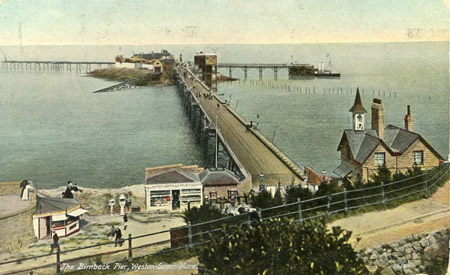
Weston-super-Mare
Birnbeck Pier (also referred to as the Old Pier)
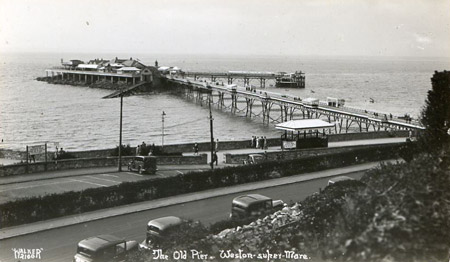
Weston-super-Mare
Birnbeck Pier (also referred to as the Old Pier)
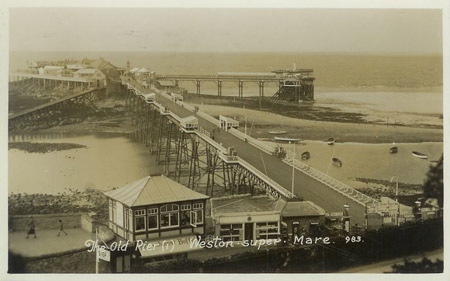
Weston-super-Mare
Birnbeck Pier (also referred to as the Old Pier)
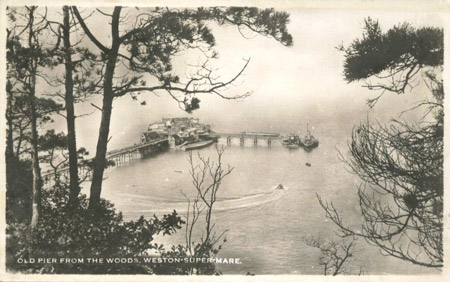
Weston-super-Mare
Birnbeck Pier water chute, posted 1909
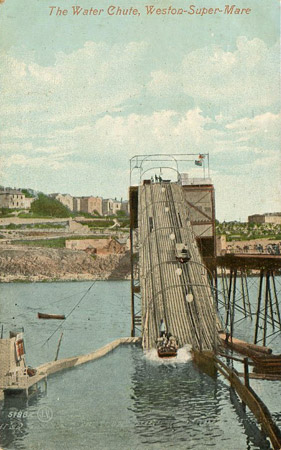
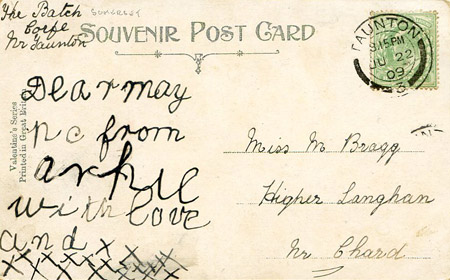
Weston-super-Mare
Birnbeck Pier (also referred to as the Old Pier)
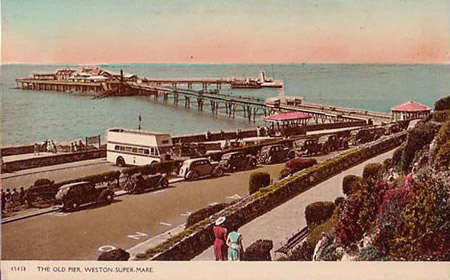
Weston-super-Mare
Birnbeck Pier (also referred to as the Old Pier)
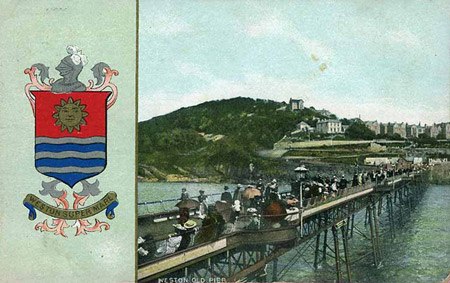
Weston-super-Mare
Birnbeck Pier (also referred to as the Old Pier)
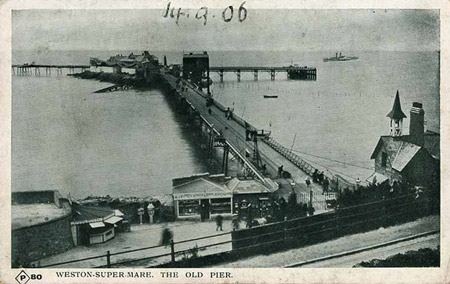
Weston-super-Mare
Birnbeck Pier (also referred to as the Old Pier)

Weston-super-Mare
Birnbeck Pier (also referred to as the Old Pier)

Weston-super-Mare
Birnbeck Pier (also referred to as the Old Pier)
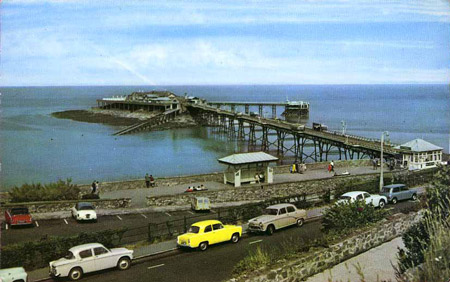
Weston-super-Mare
Birnbeck Pier (also referred to as the Old Pier)
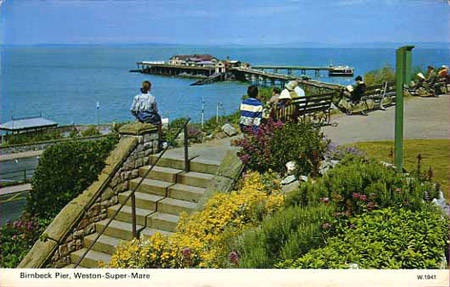
Weston-super-Mare
Birnbeck Pier (also referred to as the Old Pier)
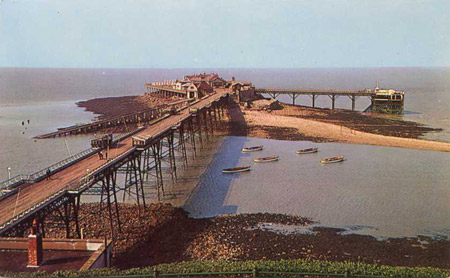
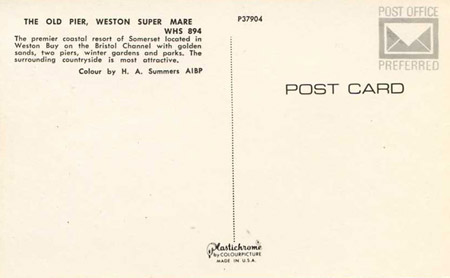
Grand Pier - The New Pier
The Grand Pier is privately-owned and is one of
three piers in the town together with Birnbeck Pier, which stands
derelict awaiting possible restoration and the much shorter SeaQuarium
aquarium built towards the south end of the seafront. It is supported by
600 iron piles,[1] and is 400 metres (1,300 ft) long. It was been
seriously damaged by fire in 1930 and 2008. It is due to re-open in 2010
following rebuilding following the 2008 fire.
Work started on the pier in 1903, with
P.Munroe acting as engineer, opening in June 1904. At the pier's end was
a 2,000 seat theatre which was used as a music hall and for opera, stage
plays and ballet. On 16 May 1907 an extension of the pier measuring 500
yards (1,500 ft) was opened, with the intention that the pier would be
used for excursion steamers, to compete with the older Birnbeck Pier.
Berthing at the pier was difficult, however, and the extension was later
demolished.
The theatre was destroyed by fire on 13th January
1930. The pier was sold to Leonard Guy, who opened a �60,000 new
pavilion three years later. This second pavilion housed a large
undercover funfair in place of the theatre. The pier was sold again in
1946 to A.Brenner, who improved the pier's facilities with new shops and
an amusement arcade in the early 1970s. The pier became a Grade II
listed building in 1974 and it won the National Piers Society Pier of
the Year award in 2001.
Brenner sold the pier in February 2008 to
brother and sister partnership Kerry and Michelle Michael. The pier
immediately underwent a multi-million-pound revamp. �1 million was spent
installing a new go-kart track, a fully licenced bar, and a climbing
wall into the pavilion. However at on 28 July 2008, a fire started in
the pavilion. Avon Fire and Rescue Service deployed 13 fire engines,
special appliances, and more than 85 fire fighters to tackle the blaze,
but the building was soon destroyed.
Workmen began dismantling
the wreckage in September 2008 and a design competition for the new
pavilion was won by the Bristol-based Angus Meek Architects. On 7
December 2008 it was announced that a slowly rotating 91 metres (299 ft)
tall observation tower was proposed along with the new building. It was
hoped to re-open the pier in the summer of 2010, but it was not yet
ready when I visited on 18th September 2010.
Weston-super-Mare Grand
Pier with the original pavilion

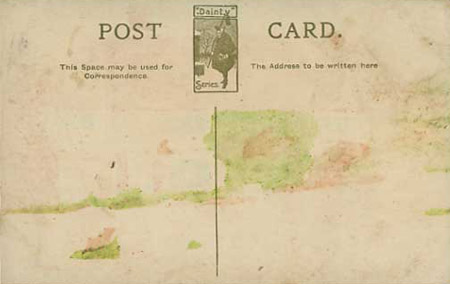
Postcard of the pier head pavilion on the Grand
Pier, posted 1911
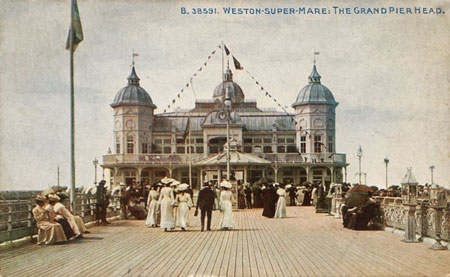
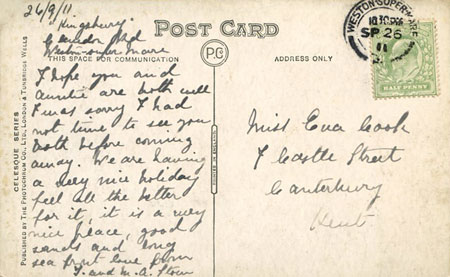
Postcard of the pier head pavilion on the Grand
Pier, posted 1901
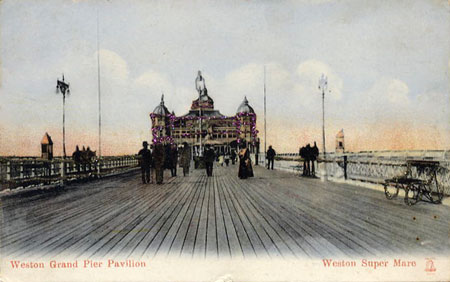
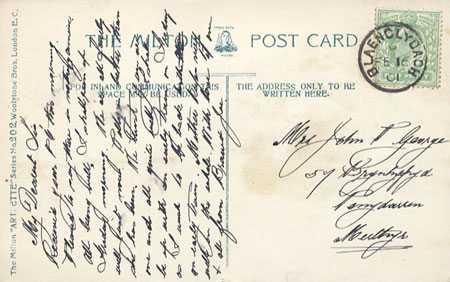
Postcard (repro) of the Grand Pier with the
original pavilion, posted 1960s
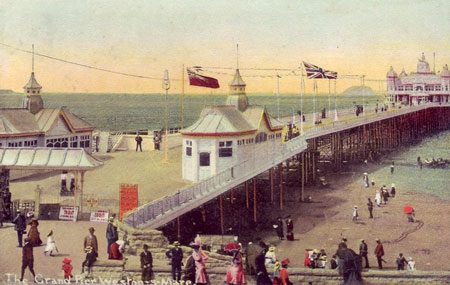
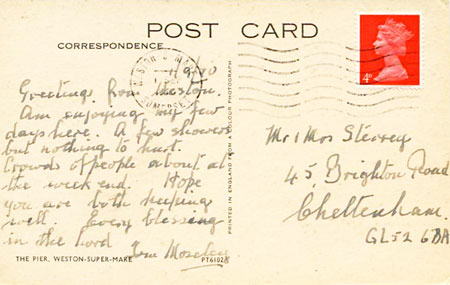
Weston-super-Mare Grand
Pier, with the steamer landing extension (opened 1907) under construction.
Posted 1912
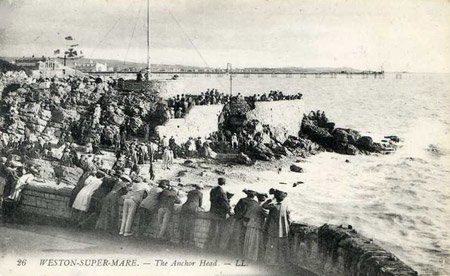
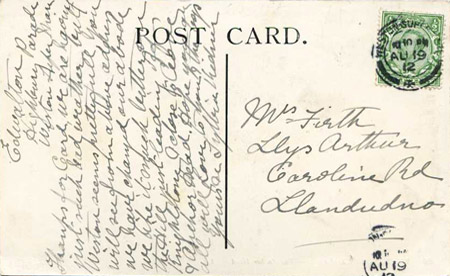
Weston-super-Mare Grand
Pier with the original pavilion
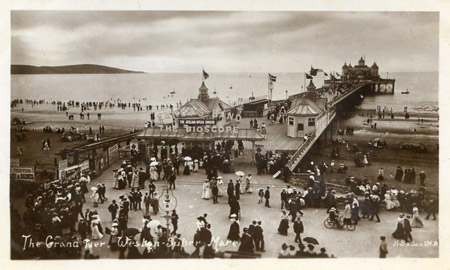
Weston-super-Mare Grand
Pier with the original pavilion (also referred to as the New Pier as on this
card)
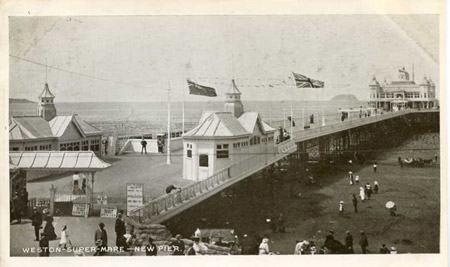
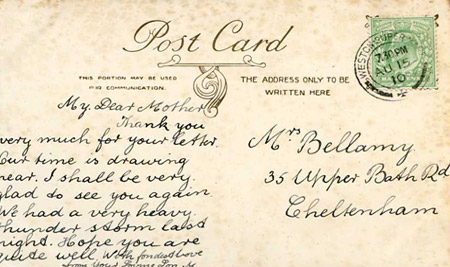
Weston-super-Mare Grand
Pier
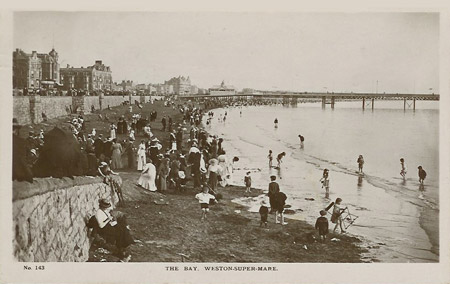
Weston-super-Mare Grand
Pier with the 1933 pavilion

Weston-super-Mare Grand
Pier with the 1933 pavilion
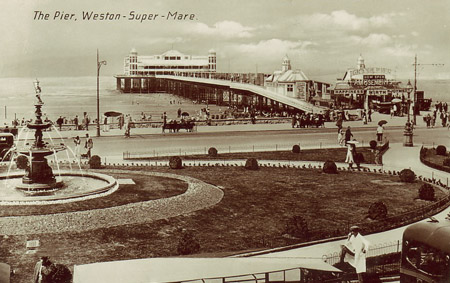
Weston-super-Mare Grand
Pier
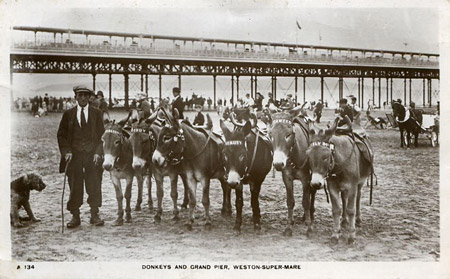
Weston-super-Mare Grand
Pier

Weston-super-Mare Grand
Pier
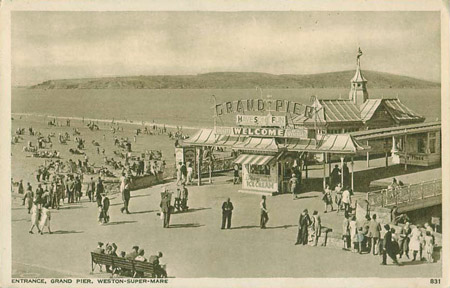
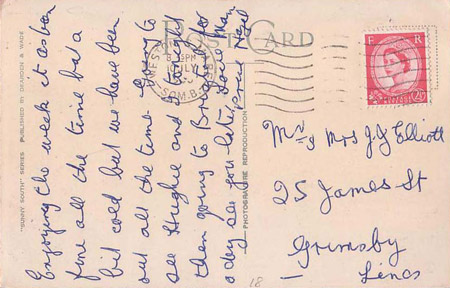
Weston-super-Mare Grand
Pier with the 1933 pavilion
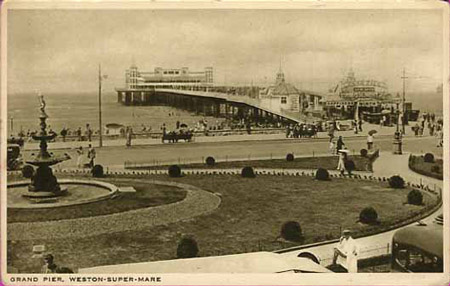
Weston-super-Mare Grand
Pier with the 1933 pavilion
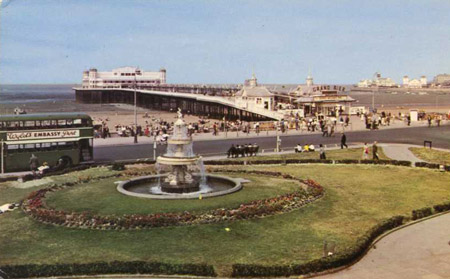
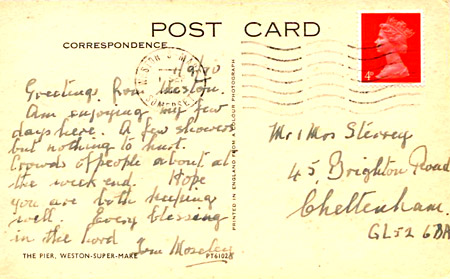
Weston-super-Mare Grand
Pier with the 1933 pavilion
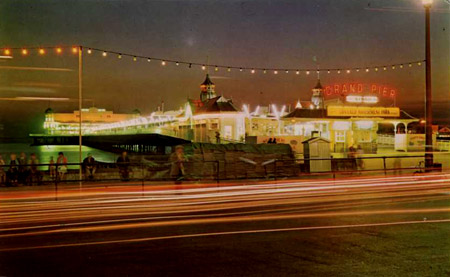
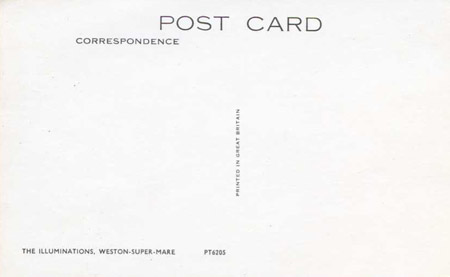
Weston-super-Mare Grand
Pier with the 1933 pavilion, plus a bizarre method of transportation - The
Whirlybird
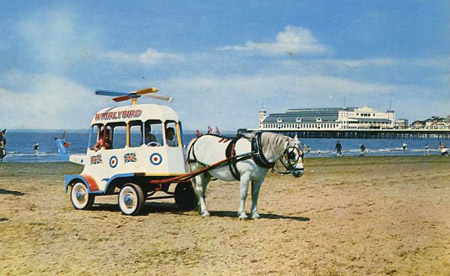
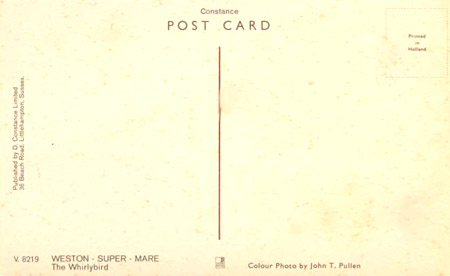
The rebuilt Grand Pier at Weston-super-Mare before
re-openingPhoto: � Ian Boyle, 18th
September 2010
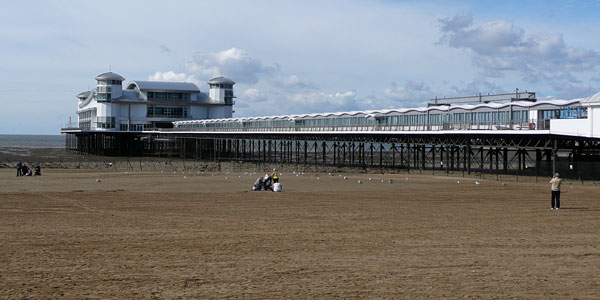
The rebuilt Grand Pier at Weston-super-Mare before
re-openingPhoto: � Ian Boyle, 18th
September 2010
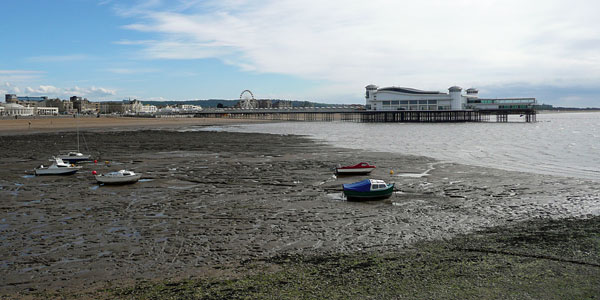
The rebuilt Grand Pier at Weston-super-Mare before
re-openingPhoto: � Ian Boyle, 18th
September 2010
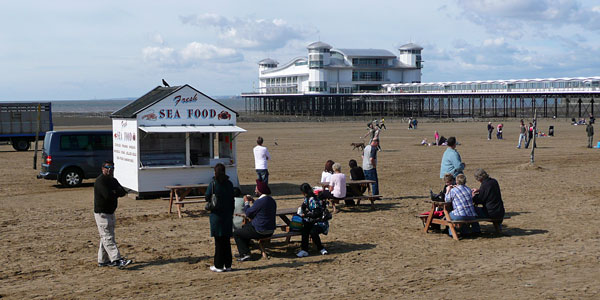
The rebuilt Grand Pier at Weston-super-Mare before
re-openingPhoto: � Ian Boyle, 18th
September 2010
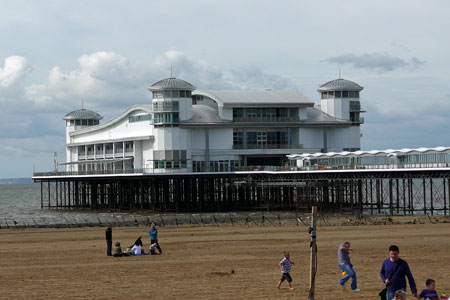
The rebuilt Grand Pier at Weston-super-Mare before
re-openingPhoto: � Ian Boyle, 18th
September 2010
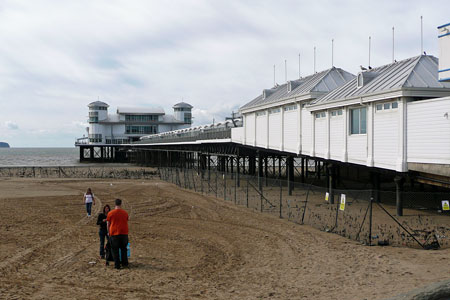
The rebuilt Grand Pier at Weston-super-Mare before
re-openingPhoto: � Ian Boyle, 18th
September 2010
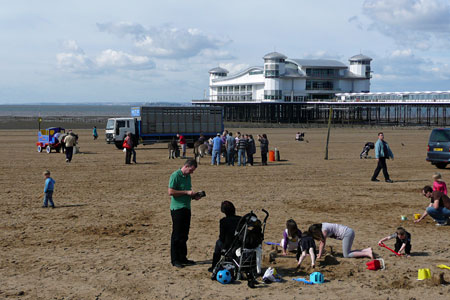
Excursion Boats
Beach Boats
Postcard of beach excursion boats seen from the
Grand Pier
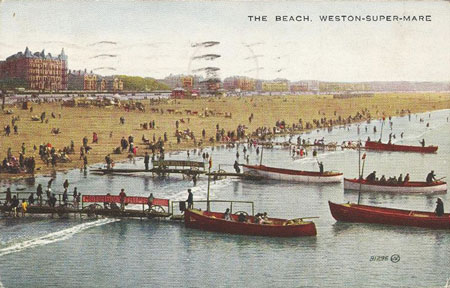
Postcard of beach pleasure boat and the Grand Pier

Postcard of beach excursion boats seen from the
Grand Pier
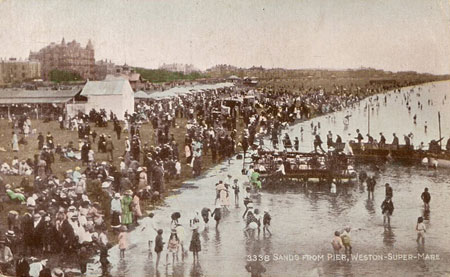
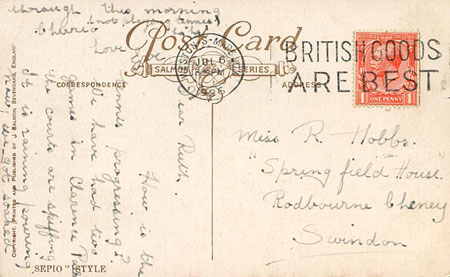
P&A Campbell
The most successful
steamer company serving the Bristol Channel was P & A Campbell's White
Funnel fleet. They dominated sailings to Weston for many years. Their
operations were suspended during the Second World War but afterwards the
number of passengers carried decreased with the availability of cheap
foreign holidays and the opening on the Severn Bridge in the 1960s.
Campbell's owned the Birnbeck Pier from 1962 until the cessation of
their sailings. Regular ferries ceased serving Birnbeck in 1971 and the
final excursion called on 19 October 1979. The excursion vessels PS
Waverley and MV Balmoral still operate in the Bristol
Channel, but any calls at Weston are made by a connecting tender from
Knightstone Harbour.
Additional postcards of P&A Campbell vessels at
Weston will be added
P&A Campbell paddle steamer Cambria at
Birkbeck Pier
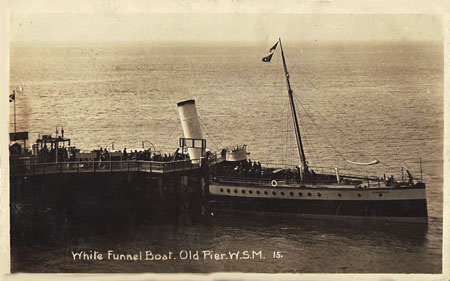
Bristol Queen
(Built: 1938 - Martin Woolls/MW Marine: 1999- )
Bristol Queen was built as the Leven
of the Caledonian Steam Packet Co in 1938. She was sold to Belfast in 1965
but almost immediately came to West Country. She first ran with South
Western Steam Navigation at Paignton, then passed to Barrow 1970 as Pride
of the Bay where she was much modified and stayed to early 1985. She ran
in Jersey 1985-99 and then came to Weston-super-Mare for Martin Woolls as Bristol
Queen where she runs Bristol Channel excursions and in 2012 acts
as ferry to Flatholm.
Bristol Queen
based at Weston-super-Mare
Photo:
© Mike Tedstone
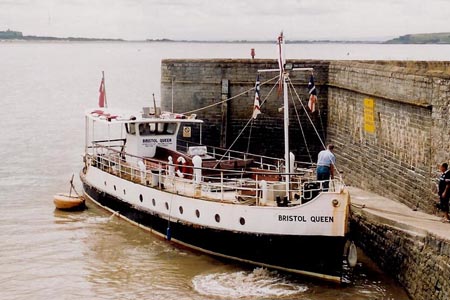
Bristol Queen
based at Weston-super-Mare
Photo:
© Chris Jones.
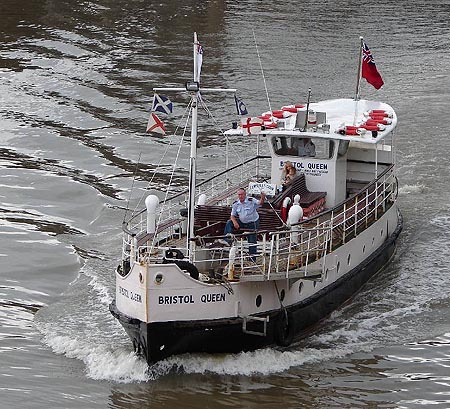
Bristol Queen
based at Weston-super-Mare
Photo:
© Chris Jones.
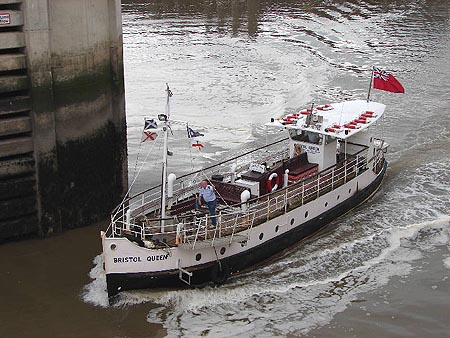
Bristol Queen
based at Weston-super-Mare
Photo:
© Chris Jones.

Westward Ho (ex-Cromarty Rose)
at Knightstone harbour, Weston-super-Mare, with Bristol Queen
Photo: � Ian Boyle, 18th September 2010
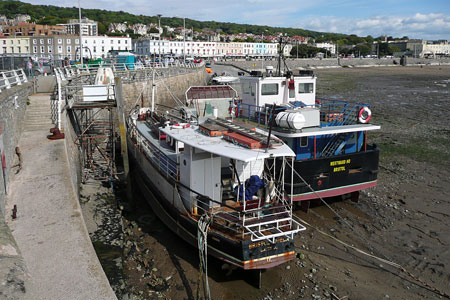
Westward Ho (ex-Cromarty Rose)
at Knightstone harbour, Weston-super-Mare, with Bristol Queen
Photo: � Ian Boyle, 18th September 2010
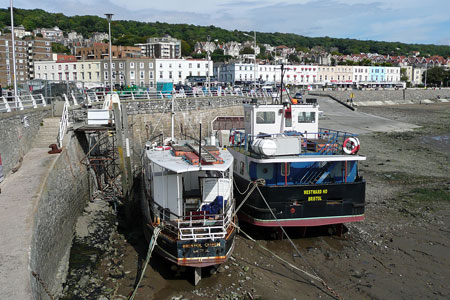
Westward Ho
(Built: 1987 - Martin Woolls: 2010- )
Westward
Ho was built in 1987 in Ardrossan as the
Cromarty Rose
for the ferry service which operated across the mouth of Cromarty Firth
between Cromarty and Nigg. In 2010, the Cromarty Ferry Company replaced
the
Cromarty Rose with a new ferry.
Cromarty Rose
was sold to Martin Woolls at Weston-super-Mare on the Bristol Channel,
arriving in June 2010, and renamed
Westward Ho after the P&A
Campbell vessels of the same name (Martin having previously worked for
the company on MV Balmoral). In 2012
Westward Ho runs services
to the island of Flatholm from Knightstone Harbour at Weston, along
with the 1938 motor vessel
Bristol Queen (ex-Leven of the Caledonian SP Co).
Westward Ho (ex-Cromarty Rose)
at Knightstone harbour, Weston-super-Mare, with Bristol Queen
Photo: � Ian Boyle, 18th September 2010
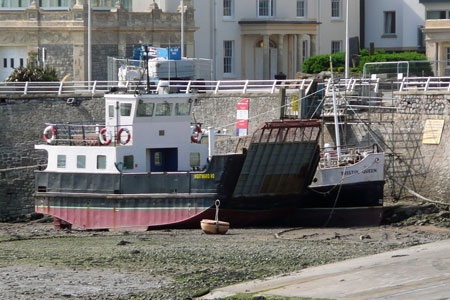
Westward Ho (ex-Cromarty Rose)
at Knightstone harbour, Weston-super-Mare, with Bristol Queen
Photo: � Ian Boyle, 18th September 2010
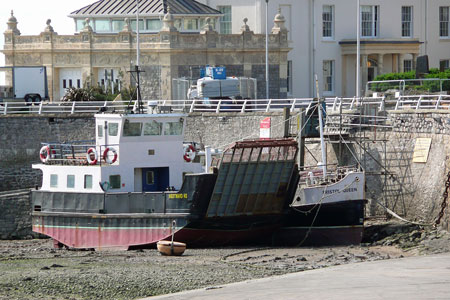
Westward Ho (ex-Cromarty Rose)
at Knightstone harbour, Weston-super-Mare, with Bristol Queen
Photo: � Ian Boyle, 18th September 2010
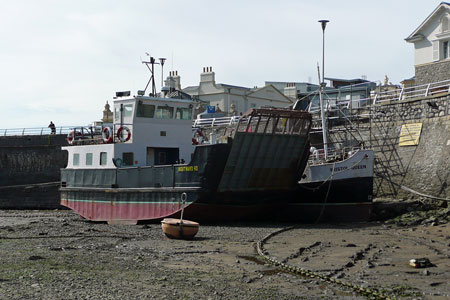
Westward Ho (ex-Cromarty Rose)
at Knightstone harbour, Weston-super-Mare, with Bristol Queen
Photo: � Ian Boyle, 18th September 2010
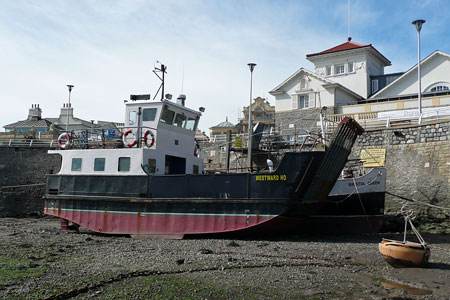
Westward Ho (ex-Cromarty Rose)
at Knightstone harbour, Weston-super-Mare, with Bristol Queen
Photo: � Ian Boyle, 18th September 2010
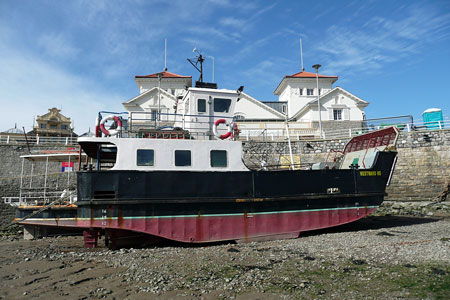
Westward Ho (ex-Cromarty Rose)
at Knightstone harbour, Weston-super-Mare, with Bristol Queen
Photo: � Ian Boyle, 18th September 2010
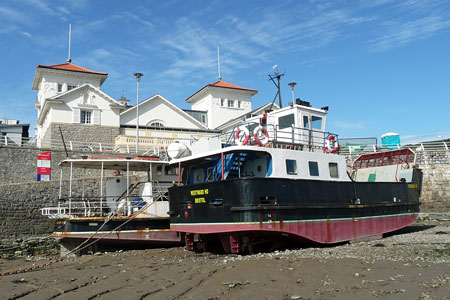
Westward Ho (ex-Cromarty Rose)
at Knightstone harbour, Weston-super-Mare, with Bristol Queen
Photo: � Ian Boyle, 18th September 2010
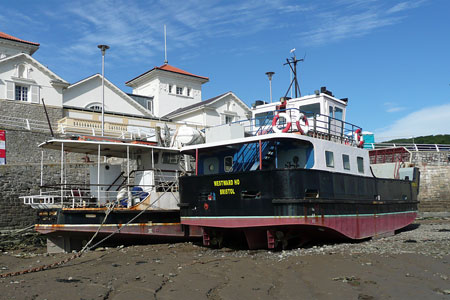
Ferry
Postcards
-
Cruise
Ship Postcards
-
Ocean
Liner Postcards
Top
of Page
-
Simplon
Postcards - Recent Updates -
Simplon Postcards - Home Page